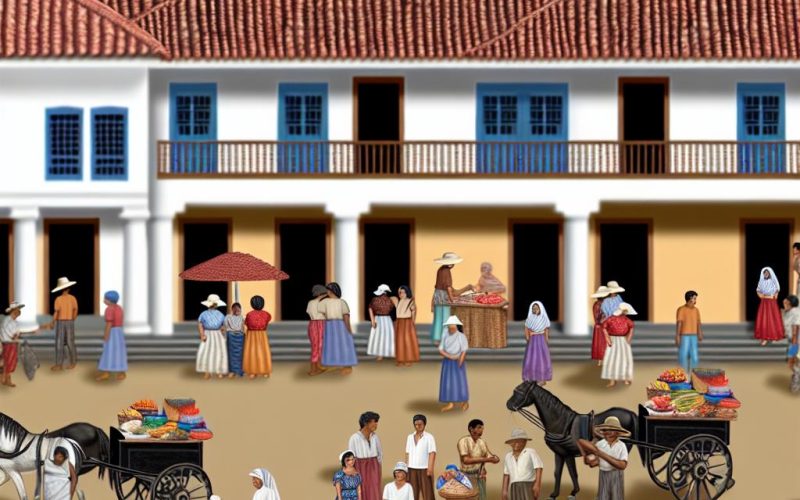Granada, a vibrant city in southwestern Nicaragua, holds a unique place in the annals of American history as one of the oldest colonial cities, having been founded in 1524. Its location on the northwestern shore of Lake Nicaragua played a pivotal role in its emergence as a key trading center during the Spanish colonial period. The city serves as a living museum, with its immaculately preserved architecture inviting historians and tourists alike to delve into its fascinating past.
The Historical Significance of Granada
Founded in the early sixteenth century, Granada quickly rose to prominence due to its strategic position. The city not only facilitated trade but became a melting pot where cultures and ideas converged. This crossroads of commerce and culture provided a bedrock for Granada’s rich history.
Architecture and Urban Layout
One of Granada’s most captivating aspects is its remarkable colonial architecture. The city is a tapestry of colorful buildings and grand structures from the 16th century, painstakingly preserved to reflect a bygone era. Visitors wandering through the city often find themselves in awe of the architectural wonders grounded in historical narratives.
Granada Cathedral
Standing proudly at the city’s center, the Granada Cathedral serves as an emblem of the city’s colonial spirit. Although originally built in 1583, the cathedral underwent multiple reconstructions. Today, it harmonizes neoclassical and colonial elements beautifully. Its commanding yellow facade and towering bell towers offer iconic visuals, making the cathedral a visual and cultural focal point in Granada’s landscape.
San Francisco Convent
The San Francisco Convent is another architectural marvel, having been constructed in 1529. Among the oldest churches in Central America, the convent is an invaluable repository of historical and cultural artifacts. Housing a museum with a collection of pre-Columbian statues and relics, it provides visitors with insights into the region’s religious and cultural origins.
A City of Trade and Conflict
Granada’s advantageous position beside Lake Nicaragua facilitated a thriving trade ecosystem throughout the colonial period. It became an essential export hub for timber and gold. This wealth, however, also attracted conflict. Repeated invasions, piracy, and internal strife punctuated its history, leaving indelible marks on its heritage and infrastructure.
William Walker’s Influence
One of the most tumultuous periods in Granada’s history was the brief but impactful intervention of American filibuster William Walker in 1856. Walker’s ambition to establish an English-speaking colony in Nicaragua, with Granada as its cornerstone, was ultimately thwarted, yet the episode left behind political imprints that resonated through local and regional dynamics.
Preservation and Tourism
Today, Granada prospers as a major tourist hotspot in Nicaragua, drawing visitors with its rich tapestry of history and cultural vibrancy. A concerted effort has been made to preserve its colonial soul, ensuring the city retains its historical authenticity. Tourists can wander through its cobblestone streets, embark on idyllic horse-drawn carriage journeys, and uncover treasures in local markets and bustling artisan venues.
Natural Attractions
Beyond its architectural allure, Granada is a gateway to stunning natural wonders. Visitors are enticed by the nearby Mombacho Volcano, which offers adventurous hiking trails and a chance to immerse oneself in nature. Additionally, the Islets of Granada present a unique landscape of volcanic islands in Lake Nicaragua, ideal for bird-watching and water activities like kayaking and fishing.
Conclusion
Granada, Nicaragua, remains more than a vestige of colonial aspirations; it is a thriving urban center that preserves the delicately woven threads of its past. By nurturing its historical roots while embracing modern vibrancy, Granada serves as an ideal destination for travelers eager to explore Central America’s colonial heart. Its fusion of storied architecture, dynamic history, and natural marvels offers an unparalleled window into the rich legacy of the region.
